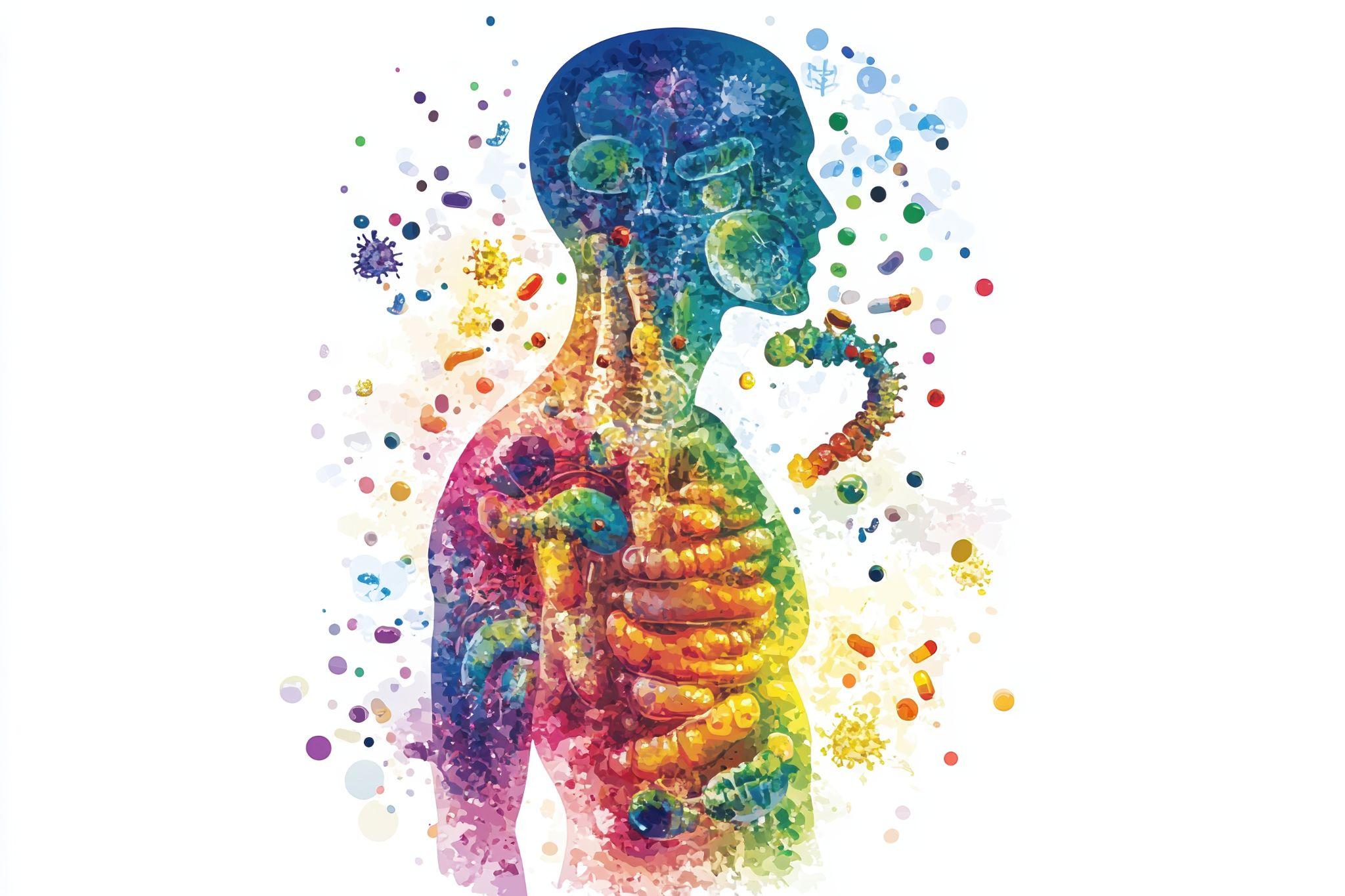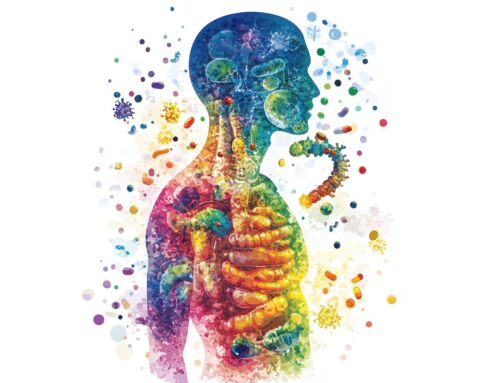The Role of Environmental Toxins in Epigenetic Dysregulation
Human health is inextricably linked to the environment, yet this balance is increasingly disrupted by widespread exposure to environmental toxins. Since the 1970s, over 87,000 chemicals have been approved for commercial use in the U.S., with most lacking robust evaluation for long-term biological effects (1). Today, individuals are chronically exposed to complex mixtures of toxicants via air, water, soil, food, and consumer products.
Growing evidence indicates that these exposures act as potent epigenetic disruptors. Epigenetic mechanisms—including DNA methylation, histone modifications, and non-coding RNAs—regulate gene expression without altering DNA sequence and are highly sensitive to environmental inputs (2). Disruption of these processes can lead to persistent alterations in gene function, contributing to the pathogenesis of various health conditions.
Systemic Disruption
A growing body of research implicates environmental toxins—including heavy metals, endocrine-disrupting chemicals (EDCs), air pollutants, and advanced glycation end products (AGEs)—in widespread physiological disruption via epigenetic reprogramming. These toxins induce heritable changes in gene expression without modifying the underlying DNA sequence, affecting key systems involved in neurodevelopment, immune regulation, metabolism, and stress adaptation.
The brain is particularly vulnerable. Environmental toxicants impede mitochondrial function, generate oxidative stress, and promote chronic neuroinflammation—mechanisms implicated in neurodevelopmental, neurodegenerative, and psychiatric conditions (3–8). These outcomes are driven by persistent epigenetic alterations influencing genes responsible for synaptic signaling, neuroplasticity, and neuronal resilience.
Beyond the central nervous system, toxin-induced epigenetic changes compromise immune tolerance, heighten systemic inflammation, and impair host defense—contributing to autoimmunity and chronic immune dysregulation. Similarly, disruption of epigenetically regulated metabolic pathways is associated with insulin resistance, obesity, mitochondrial dysfunction, and type 2 diabetes.
Mitochondrial Dysfunction
At the core of these interconnected effects lies the relationship between the epigenome and mitochondria. Mitochondria regulate detoxification, inflammation, and apoptosis beyond energy production. Environmental insults damage mitochondrial integrity, triggering oxidative stress and inflammation, which further dysregulate epigenetic mechanisms. This toxic feedback loop between mitochondria and the epigenome is especially harmful during early development, a critical period for programming long-term biological resilience or vulnerability.
Early Life & Neurodevelopment
The prenatal period is particularly sensitive to environmental toxins (including EDCs, heavy metals, air pollutants, pesticides, and industrial compounds) that disrupt key epigenetic mechanisms. These mechanisms, such as DNA methylation, histone modifications, and non-coding RNA regulation, are vital for normal brain development.
The placenta governs epigenetic effects of gestational toxin exposures, reprogramming the fetal epigenome in time-, dose-, and sex-specific ways, with males often being more vulnerable. Prenatal toxicant exposure is linked to epigenetic alterations in genes regulating the stress response and neurodevelopment—including NR3C1, FKBP5, and SLC6A4—which influence the hypothalamic–pituitary–adrenal (HPA) axis and are associated with anxiety, depression, and cognitive impairments. Additionally, reduced placental expression of O-GlcNAc transferase, an enzyme crucial for neurodevelopment, correlates with behavioral disturbances, particularly in males.
Gene-environment interactions contribute to the formation of persistent epigenetic “marks” associated with altered HPA axis sensitivity to stress, which has been linked to increased risk of psychiatric disorders and cognitive impairments across the lifespan. These observations underscore the significance of minimizing toxic exposures during pregnancy to support neurodevelopmental health (9).
Epigenomic Alterations in the Brain
Epigenetic mechanisms play a pivotal role in translating environmental exposures into lasting changes in gene activity within the brain, critically shaping neurodevelopment, synaptic connectivity, and the function of neural circuits underlying cognition, memory, and emotional regulation.
Mounting evidence links exposure to neurotoxicants—including heavy metals, air pollutants, pesticides, and endocrine-disrupting chemicals (EDCs)—to specific epigenetic alterations. These include changes in DNA methylation, histone modifications, and non-coding RNA expression, with downstream effects on synaptic plasticity and neuronal signaling. Such alterations have been associated with neurodevelopmental conditions like autism spectrum disorders (ASD), and with neurodegenerative processes relevant to Alzheimer’s (AD) and Parkinson’s disease (PD), including disrupted amyloid clearance and neuronal loss (10).
A 2025 systematic review identified 127 environmental toxicants—including arsenic, cadmium, manganese, and mercury—associated with AD, PD, and ALS, all linked to disrupted DNA methylation patterns (11). Subsequent studies support the role of these exposures in epigenetic neurotoxicity and increased neurodegenerative risk (12–14).
These findings suggest a converging mechanism—epigenetic remodeling—underlying diverse neurodegenerative diseases. Identifying shared toxic triggers may offer a unified framework for prevention, risk assessment, and early intervention through environmental regulation and epigenetic monitoring.
AGEs & Epigenetic Inflammation
Advanced glycation end products (AGEs), commonly associated with high-glycemic diets and metabolic dysregulation, are also generated through exposure to cigarette smoke, air pollution, and industrial food processing. These compounds are increasingly recognized as environmentally derived toxicants with potential relevance to epigenetic regulation.
AGEs interact with the receptor for advanced glycation end products (RAGE), initiating signaling cascades that activate nuclear factor kappa B (NF-κB), a transcription factor implicated in inflammatory and immune responses (15). This pathway has been associated with increased cytokine production, immune cell recruitment, and oxidative stress. These downstream effects are hypothesized to contribute to epigenetic modifications, including changes in DNA methylation, histone post-translational modifications, and non-coding RNA expression—molecular processes implicated in the pathogenesis of chronic disease.
In neural tissue, AGE–RAGE interactions have been linked to neuroinflammatory signaling, altered synaptic plasticity, and cellular stress responses. Studies suggest that sustained activation of this pathway may influence epigenetic remodeling in both neurons and glial cells, potentially contributing to mechanisms underlying neurodegenerative processes. Additionally, AGEs have been shown to interfere with insulin signaling and promote cellular dysfunction in extra-neural tissues, including the vasculature and pancreas.
Emerging research also highlights the role of AGEs in modulating the gut–brain axis. Evidence suggests that AGE exposure may influence microbial composition and intestinal permeability, fostering systemic inflammation and contributing to broader epigenetic dysregulation across immune and neural networks.
Aging & Environmental Toxins
Aging is now understood as a dynamic process shaped by epigenetic mechanisms and environmental influences, rather than predetermined genetics. Telomere length—a marker of cellular aging—is highly sensitive to environmental toxins. Exposure to air pollutants, heavy metals, and EDCs accelerates telomere attrition by inducing oxidative stress, chronic inflammation, and mitochondrial dysfunction (16).
Simultaneously, these exposures disrupt DNA methylation, histone modifications, and chromatin architecture, undermining DNA repair and promoting age-related diseases such as cardiovascular disease, neurodegeneration, and metabolic syndromes.
Studies have shown that individuals with greater cumulative exposure to environmental toxins often display both shorter telomeres and increased epigenetic age—two independent but converging biomarkers of accelerated aging.
Cumulative environmental burdens—including poor nutrition, stress, sleep, and pollution—exacerbate premature epigenetic aging, shortening healthspan and increasing chronic disease risk.
Epigenetic Disruption of the HPA Axis
The hypothalamic–pituitary–adrenal (HPA) axis, which plays a central role in modulating stress responses, appears to be particularly sensitive to environmental and epigenetic influences. Emerging research suggests that exposure to endocrine-disrupting chemicals, air pollutants, and chronic psychosocial stressors is associated with epigenetic modifications in key regulatory genes of the HPA axis, including NR3C1 and FKBP5—genes involved in glucocorticoid receptor function and cortisol signaling (16).
These epigenetic alterations have been correlated with changes in HPA axis reactivity, which may manifest as either hyper- or hypo-responsiveness to stress. Such dysregulation is being increasingly explored in the context of metabolic disturbances, immune dysfunction, and psychiatric symptoms. Systematic reviews, including Ring (2025), highlight the complexity of HPA axis modulation and underscore the contributions of nutritional, microbial, psychosocial, and environmental inputs in shaping its function over time (17).
Salivary cortisol profiling has emerged as a non-invasive biomarker capable of detecting subtle deviations in HPA axis activity. Patterns observed in these profiles may reflect underlying epigenetic changes and are being utilized as early indicators of stress-related physiological imbalance. Mind-body attunement is also valuable for picking up cues of stress.
Disruption of the HPA axis has additionally been associated with impeded circadian rhythm balance, which may further disrupt sleep and overall systemic health. These downstream effects are believed to reinforce epigenetic instability, suggesting a bidirectional relationship between HPA dysregulation and broader physiological and molecular stress responses.
Integrative approaches—encompassing lifestyle changes, nutritional support, adaptogens, and circadian rhythm optimization—aim to restore HPA balance by addressing both environmental triggers and epigenetic consequences. This approach offers a more personalized path for managing stress-related conditions.
Toxin-Induced Mast Cell Activation
Emerging research suggests that environmental toxins—particularly xenobiotics—can trigger aberrant mast cell activation in genetically or immunologically susceptible individuals, contributing to the pathophysiology of Mast Cell Activation Syndrome (MCAS). One proposed mechanism is toxicant-induced loss of tolerance, where an initial toxicant exposure reduces the individual’s threshold for subsequent reactions. This sensitization can result in mast cell hyperreactivity to otherwise non-threatening environmental stimuli, potentially explaining the fluctuating, multisystem symptoms observed in both chemical intolerance and MCAS (18).
Contributing factors such as chronic psychosocial stress, genetic polymorphisms, and cumulative toxicant burden may further influence susceptibility and clinical expression.
Implications for Lifespan Health
While prenatal and early life are critical periods of epigenetic vulnerability, toxin-induced changes persist throughout life. In adults, these alterations may contribute to chronic diseases, including neurodegeneration, metabolic syndrome, and immune dysfunction. Emerging research also reveals the role of paternal exposures in intergenerational epigenetic inheritance (19-20).
Supporting the Epigenome
An integrative framework for addressing environmental epigenetics is significant for both prevention and support of various health conditions, reflecting the complex interplay among biology, toxin exposure, and systemic dysregulation.
The dynamic and often reversible nature of many epigenetic modifications presents opportunities for personalized, targeted interventions. A nutrient-dense diet that supports methylation pathways, along with reducing toxin exposure and burden, forms the foundation of intervention. Phytochemicals and targeted binders are particularly noteworthy in reducing the effects of environmental toxins (21). Equally significant are lifestyle-based modalities that promote the body’s natural detoxification, repair, and regulatory systems.
Restorative sleep enhances glymphatic and lymphatic clearance of toxins and cellular waste. Regular sunlight and nature exposure, movement, optimal hydration, and nutrition promote mitochondrial resilience, and reduce oxidative stress and systemic inflammation, while increasing antioxidant defenses. Yoga, infrared sauna use, grounding, forest bathing, and other somatic (chiropractic, massage, and acupuncture) and adaptive stress-reduction modalities further support detox and modulation of the stress response and reduction of toxic load.
Caring for the environment is also a foundational aspect of protecting health at the epigenetic level—both now and for future generations (22).
Join us for this upcoming compelling webinar, Detoxification Mastery: Advanced Strategies for Environmental Toxin Elimination & Clinical Application, on September 16th, 5–7 PM. Leading experts Jeff Bland, PhD, Connie Zack, Debbie Floyd, and Jill Carnahan, MD, will present cutting-edge research on environmental toxins and their effects on aging, immunity, and chronic disease—along with advanced clinical protocols to mitigate their effects, supported by patient case studies.
References:
- US Environmental Protection Agency Endocrine Disruptor Screening Program. Environmental Protection Agency; 2012. Universe of chemicals and general validation principles.
- Hou L, Zhang X, Wang D, Baccarelli A. Environmental chemical exposures and human epigenetics. Int J Epidemiol. 2012 Feb;41(1):79-105. doi: 10.1093/ije/dyr154. Epub 2011 Dec 13. PMID: 22253299; PMCID: PMC3304523.
- Reproductive health: Piazza MJ, Urbanetz AA. Environmental toxins and the impact of other endocrine disrupting chemicals in women’s reproductive health. JBRA Assist Reprod. 2019 Apr 30;23(2):154-164. doi: 10.5935/1518-0557.20190016. PMID: 30875185; PMCID: PMC6501744.
- Krzastek SC, Farhi J, Gray M, Smith RP. Impact of environmental toxin exposure on male fertility potential. Transl Androl Uro 2020 Dec;9(6):2797-2813. doi: 10.21037/tau-20-685. PMID: 33457251; PMCID: PMC7807371.
- Immune health: Kharrazian D. Exposure to Environmental Toxins and Autoimmune Conditions. Integr Med (Encinitas). 2021 Apr;20(2):20-24. PMID: 34377090; PMCID: PMC8325494.
- Gut: Chiu K, Warner G, Nowak RA, Flaws JA, Mei W. The Impact of Environmental Chemicals on the Gut Microbiome. Toxicol Sci. 2020 Aug 1;176(2):253-284. doi: 10.1093/toxsci/kfaa065. PMID: 32392306; PMCID: PMC7416318.
- Metabolic health: Sun Y. Environmental Toxicology and Metabolism. Metabolites. 2024 Sep 30;14(10):530. doi: 10.3390/metabo14100530. PMID: 39452911; PMCID: PMC11509638.
- Mental health: James AA, OShaughnessy KL. Environmental chemical exposures and mental health outcomes in children: a narrative review of recent literature. Front Toxicol. 2023 Nov 30;5:1290119. doi: 10.3389/ftox.2023.1290119. PMID: 38098750; PMCID: PMC10720725.
- Álvarez-Mejía D, Rodas JA, Leon-Rojas JE. From Womb to Mind: Prenatal Epigenetic Influences on Mental Health Disorders. Int J Mol Sci. 2025 Jun 25;26(13):6096. doi: 10.3390/ijms26136096. PMID: 40649875; PMCID: PMC12250387.
- Minal N, Nilesh W, Akanksha K. Epigenetic Regulation in Neuroplasticity: Key to Understanding and Treating Neurological Diseases. Zhongguo Ying Yong Sheng Li Xue Za Zhi. 2025 Jun 19;41:e20250011. doi: 10.62958/j.cjap.2025.011. PMID: 40533395.
- Newell ME, Aravindan A, Babbrah A, Halden RU. Epigenetic Biomarkers Driven by Environmental Toxins Associated with Alzheimer’s Disease, Parkinson’s Disease, and Amyotrophic Lateral Sclerosis in the United States: A Systematic Review. 2025 Jan 31;13(2):114. doi: 10.3390/toxics13020114. PMID: 39997929; PMCID: PMC11860158.
- Olawade DB, Rashad I, Egbon E, Teke J, Ovsepian SV, Boussios S. Reversing Epigenetic Dysregulation in Neurodegenerative Diseases: Mechanistic and Therapeutic Considerations. Int J Mol Sci. 2025 May 21;26(10):4929. doi: 10.3390/ijms26104929. PMID: 40430067; PMCID: PMC12112518.
- Mehta I, Verma M, Quasmi MN, Kumar D, Jangra A. Emerging roles of histone modifications in environmental toxicants-induced neurotoxicity. Toxicology. 2025 Aug;515:154164. doi: 10.1016/j.tox.2025.154164. Epub 2025 Apr 24. PMID: 40286899.
- Koulouri A, Zannas AS. Epigenetics as a link between environmental factors and dementia risk. J Alzheimers Dis Rep. 2024 Oct 18;8(1):1372-1380. doi: 10.1177/25424823241284227. PMID: 40034348; PMCID: PMC11863733.
- Kavitha SA, Zainab S, Muthyalaiah YS, John CM, Arockiasamy S. Mechanism and implications of advanced glycation end products (AGE) and its receptor RAGE axis as crucial mediators linking inflammation and obesity. Mol Biol Rep. 2025 Jun 5;52(1):556. doi: 10.1007/s11033-025-10632-x. PMID: 40474023.
- Azani A, Sharafi M, Doachi R, Akbarzadeh S, Lorestani P, Haji Kamanaj Olia A, Zahed Z, Gharedaghi H, Ghasrsaz H, Foroozand H, Rahimi H, Tahmasebi S, Behfar Q. Applications of CRISPR-Cas9 in mitigating cellular senescence and age-related disease progression. Clin Exp Med. 2025 Jul 8;25(1):237. doi: 10.1007/s10238-025-01771-3. PMID: 40627177; PMCID: PMC12238200.
- Ring M. An Integrative Approach to HPA Axis Dysfunction: From Recognition to Recovery. Am J Med. 2025 Jun 9:S0002-9343(25)00353-5. doi: 10.1016/j.amjmed.2025.05.044. Epub ahead of print. PMID: 40499704.
- Plum, T., Binzberger, R., Thiele, R. et al. Mast cells link immune sensing to antigen-avoidance behaviour. Nature 620, 634–642 (2023). https://doi.org/10.1038/s41586-023-06188-0
- Liao H, Lu D, Reisinger SN, Mehrabadi MR, Gubert C, Hannan AJ. Epigenetic effects of paternal environmental exposures and experiences on offspring phenotypes. Trends Genet. 2025 Jun 3:S0168-9525(25)00107-6. doi: 10.1016/j.tig.2025.04.015. Epub ahead of print. PMID: 40467385.
- Fülöp V, Kalmár L, Kiss A, Lakatos K, Végh G, Arányi T. A környezeti tényezők hatása a magzatra és a későbbi életkorokra epigenetikai mechanizmusokon keresztül [The effects of environmental factors on the embryonic and late postembryonic life through epigenetic mechanisms]. Orv Hetil. 2025 May 25;166(21):799-807. Hungarian. doi: 10.1556/650.2025.33305. PMID: 40418583.
- Sokan-Adeaga AA, Sokan-Adeaga MA, Sokan-Adeaga ED, Oparaji AN, Edris H, Tella EO, Balogun FA, Aledeh M, Amubieya OE. Environmental toxicants and health adversities: A review on interventions of phytochemicals. J Public Health Res. 2023 Jun 29;12(2):22799036231181226. doi: 10.1177/22799036231181226. PMID: 37440795; PMCID: PMC10334012.
- Aggarwal V, Mehndiratta MM, Wasay M, Garg D. Environmental Toxins and Brain: Life on Earth is in Danger. Ann Indian Acad Neurol. 2022 Sep;25(Suppl 1):S15-S21. doi: 10.4103/aian.aian_169_22. Epub 2022 Sep 5. PMID: 36213101; PMCID: PMC9540824.












